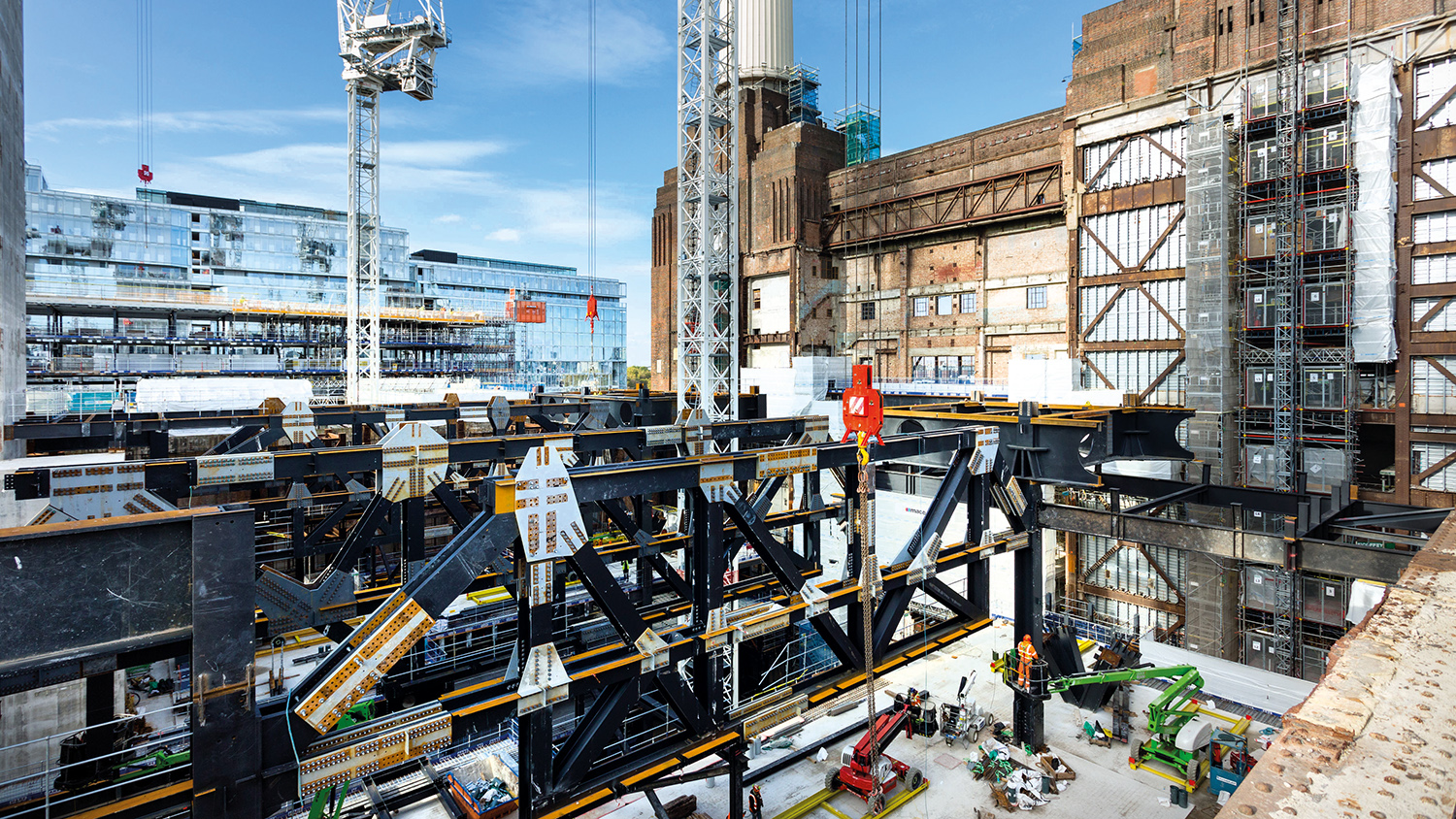
Structural steelwork has been extensively used to transform Battersea Power Station into a multi-use destination that sits in the middle of a large swathe of regenerated land on the capital’s south bank.
Completed in two phases either side of the Second World War, Battersea Power Station has been one of the capital’s iconic landmarks for decades. Its four chimneys are instantly recognisable to millions of people.
Award: Battersea Power Station, London
Architect: WilkinsonEyre
Structural engineer: Buro Happold
Principal structural steelwork contractor: William Hare
Architectural structural steelwork contractor: CMF Ltd
Main contractor: Mace
Client: Battersea Power Station Development Company
Before being decommissioned in 1983, the Grade II*-listed power station once supplied around one-fifth of London’s electricity needs, consuming more than one million tonnes of coal annually.
Having stood derelict for many years and after a number of failed attempts to redevelop the site, the landmark structure has now been transformed into a huge mixed-use scheme, which is served by the Northern Line underground extension and sits at the heart of 17ha of regenerated former brownfield land.
The construction programme included rebuilding the four iconic chimneys and the retention of the building’s exterior. Inside the structure, new steelwork, sitting alongside more retained elements, forms space for 252 apartments, restaurants, shops, cinemas, six floors of office space and an entertainment venue capable of accommodating 2,000 people.
The building can be divided up into a number of elements, including a central boiler house, turbine halls, a switch room and annexes on both sides – east and west. Each element is separated from the adjoining areas by internal walls, largely retained from the original building.
Erecting new steel-framed elements was not a straightforward procedure. The entire programme had to be coordinated around a vast array of temporary works and bracings that were installed to support the existing structure after a partial demolition programme had been completed.

Within the boiler house there are five different elements, including car park, retail, public/event spaces, offices and residential apartments – all stacked vertically on top of one another. Each required a different column grid pattern and, through frame optimisation and organisation of spaces, these stacked usages were achieved with only two structurally super-efficient transfer levels, one of which doubles as a plantroom.
In the historic turbine halls, a new structure was introduced behind the retained heritage fabric, allowing features such as the new retail gallery decks to be introduced.
Pinpoint accuracy was required to introduce columns set 75mm away from the existing structure that support new cantilevering turbine hall walkways and a new 13-storey building infill inside the adjacent boiler house.
To facilitate this proximity without compromising existing foundations, buried concrete-encased 24 tonne steel beams cantilever over new piles to support the new columns.
“From robust steel tree columns supporting heavy loads to intricate tensile restraint frames and footbridges, every element exudes an elegant touch showcasing a harmonious blend of design and functionality.”
At the northern end of the boiler house, framing the entrance to the main retail zone and events space, is a large 27m-long x 2.6m-deep plated girder weighing a massive 62 tonnes, which is positioned at the underside of the fifth floor. As well as helping to create the large open space below, it also transfers a load in excess of 2,000 tonnes down the building, while supporting eight floors above.
The beam – one of the largest single pieces of steel manufactured in the UK in recent times – was brought to site in one section.
Working in conjunction with the large beam, and also helping to create the events space’s
column-free interior, are two feature 12m-high steel trees that each support a 30m x 30m floor area.
Summing up, the judges say the newly revealed steel structures reflect the industrial legacy, seamlessly integrating with the building’s aesthetics. From robust steel tree columns supporting heavy loads to intricate tensile restraint frames and footbridges, every element exudes an elegant touch, showcasing a harmonious blend of design and functionality.
Produced by the BCSA and Steel for Life in association with Construction Management











